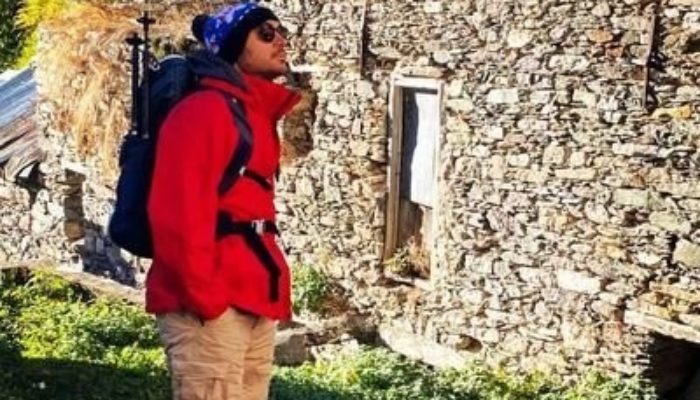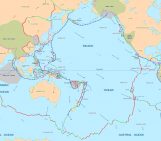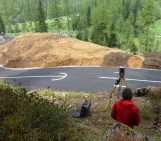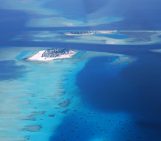
Hi Francesco. Thanks for agreeing to this interview! To break the ice, could you tell our readers a bit about yourself and your research?
Hey Simon! I’m an Italian hydrologist and earned a PhD at Politecnico di Milano with a dissertation on how snowmelt contributes to seasonal runoff. I then did a postdoc at UC Berkeley, California, where I collaborated with a major US hydropower company to improve models used to forecast seasonal freshwater supply in the Sierra Nevada. Since 2019, I have been working at CIMA Research Foundation, an Italian applied-research institute focusing on civil protection, disaster risk reduction, climate change, and marine ecosystems. At CIMA, I develop tools to predict and manage water risks in mountain regions, where snow and glacier ice are the dominant drivers of the water cycle. A concrete example of our work on this is IT-SNOW, an open-source tool quantifying how much snow deposited across Italy every day since 2010. IT-SNOW has an operational counterpart, S3M Italy, which we maintain in real time for the Italian civil protection system.
Far from being cold and remote, the cryosphere is an essential ingredient in our planet’s life-sustaining role, especially for us humans. Could you tell us how life is dependant on the frozen realms?
Every droplet of water that is in frozen form on Earth is part of the cryosphere – glaciers, snow, sea ice, ice caps and sheets etc. Ice reflects a considerable amount of solar radiation, meaning that the vast regions of both hemispheres that are seasonally covered by the cryosphere play a key role in dictating global climate. Ice and snow are also efficient insulators, which regulates both soil and sea temperature and so preserves life!
Besides these (and many other!) benefits, my favourite feature of snow and ice remains the intimate nature of frozen water. We might not be used to thinking of snow and ice that way, but they are like natural reservoirs storing water during winter and releasing it during spring and summer. These reservoirs would not be that important, if not that in many regions of the world the winters are wet and summers are dry… and summer is when we need water the most! In such contexts, thawing often provides the most important, if not the only source of freshwater to sustain life during the dry season! Let’s think to the western United States, where snow provides about half of total runoff, the Andes, or High Mountain Asia! Even in Europe, peak snow accumulation is up to 60% or more of annual streamflow in the Italian Alps, while glacier melt can compensate the lack of precipitation during droughts.
Ice doesn’t like warm temperature – it is like an existential threat to it. Future projections of temperature and precipitation from the IPCC and many colleagues around the world agree in predicting a declining cryosphere in a warmer world: less frequent snowfalls, shorter snow seasons, less deep snowpacks, less extensive sea ice, progressive melt of ice caps, glaciers, and ice sheets. From a water-supply standpoint, this means we might progressively lose the cryosphere as a seasonal reservoir of water and live in a world where snowmelt will start and end earlier during the year, leaving room to a prolonged dry season. At the same time, shrinking glaciers won’t be able to make up for meteorological droughts as they did in the past. The cryosphere can also be a safety factor during intense storms, because it accumulates water upstream and releases it when the flood peak downstream has passed. This is another mechanism that is endangered in a warming climate.
Recent years have shown clear examples of what might be ahead of us. During my years in California, for example, I witnessed a long, persisting, and widespread drought (2012-16) that combined low precipitation and high temperatures. Snow accumulation hit record lows in 2015, which then led to summer water shortages, tree mortality, and wildfires. Last year, we experienced something similar across the Italian Alps, with low precipitation, high temperatures, and about one third of snow accumulation compared to the last decade; all of this translated into low streamflow levels, earlier and much more intense glacier melt, and eventually a state of emergency.
Remember: winter cryosphere is summer water. A warming climate leads to a declining cryosphere and thus a drier world, especially in summer when we need water the most!
Thanks for asking about this! We started working with elementary and high-school students one year ago, in the framework of an educational initiative called “Water and Us”. With Water and Us, we aim to raise awareness on how humans have changed the natural water cycle, on how climate change will further challenge water security worldwide, and on how this may lead to exacerbated water conflicts. Our hypothesis is that educating students on these aspects will ultimately foster improved policy (and peace!) for generations to come.
Rather than frontal lectures, we believe in educating by example… so we start from personal, practical stories of water and climate change (in my case, my years in California). Contrary to current stereotypes depicting new generations as passive or disillusioned, we found that the ancestral beauty of storytelling is still successful in attracting and aiding them with understanding complex issues, while making them realize that what happened to us will ultimately affect them as well. They feel they are part of the story, and have the tools to change it. To me, this has been one of the most meaningful projects I have been working on in my career, and I would recommend science education to anyone!
Finally, what’s the future looking like for yourself?
I now feel the urgency of working on solution-oriented science – that is, on projects that can address real world problems and generate change. I am not saying curiosity-driven research is over for me, but challenges ahead of us are so significant that I firmly believe that the future of hydrologists will be increasingly about solving problems. I remember when in high school I was facing the usual, stressful question of what to study at university: history? natural sciences? or what? Then I heard a professor (and fantastic storyteller) telling the story of the Aral Sea and how it progressively disappeared because of water management issues. That story immediately prompted me to study environmental engineering as a way to avoid repeating a similar situation. That drive is still in me, and our experiences with students tells me that I am not alone in this.



